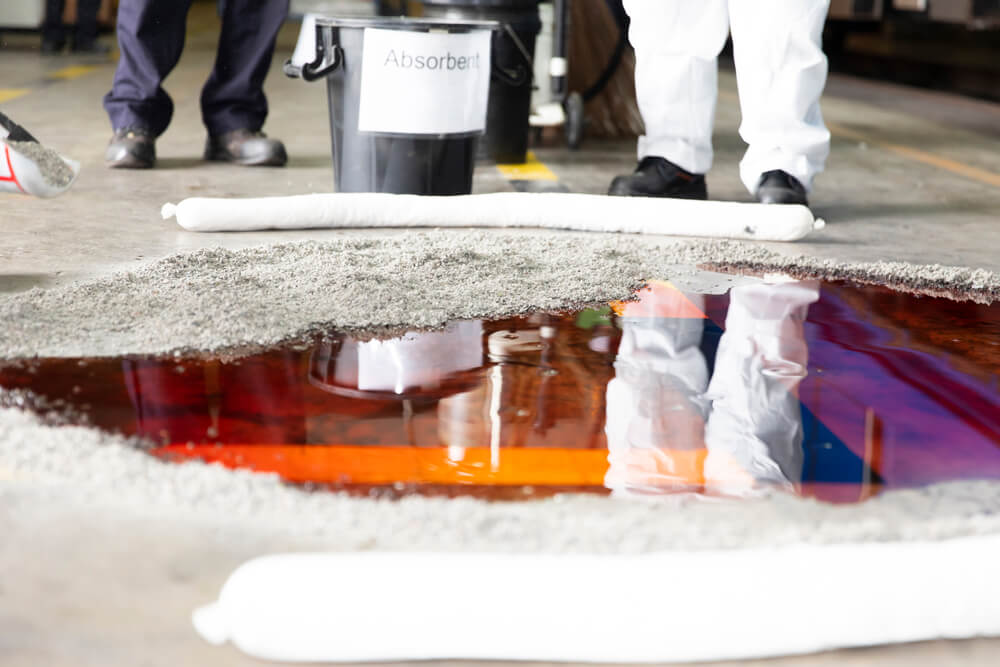How to Respond to a Hazardous Spill Effectively – Our Guide

Chemicals are part of everyday life more than people seem to realize. They’re used in the rubbing alcohol that you apply, the super glue that’s used for a torn sole, and the various implements in school laboratories.
The truth is that chemicals simply make life much more comfortable. However, they also tend to behave in a volatile manner when used carelessly, causing accidents to happen. To prevent any risks from chemical spills, everybody needs to know the basic chemical spills procedure to address such an incident.
1. Communicate and Bring Awareness to the Hazard
When a dangerous chemical spill occurs in the office, it’s important to alert everybody about what has happened. If there is a supervisor around, it’s crucial to raise it specifically as they may have been trained in evacuation protocols. Depending on the severity of the spill, you may need to call emergency authorities and tell them details of the incident so that they know what specific action to take.
Those who have come into contact with the spill or contamination must be moved from the area to a safer place. While waiting for medical personnel to arrive, flush the affected areas with water to help dilute the chemical spill, if possible.
2. Prevent the Spill From Spreading
After you have alerted the spill’s proper authorities, it’s time to prevent it from getting any worse. Taking action to stop a spill from spreading is imperative to everybody’s safety. If a container has fallen over, then set it upright and use the appropriate materials to stop the chemical’s spread.
When a chemical spill occurs, look for ways to ventilate the room to let out any fumes. It’s also best to minimize any heat or fire sources, as this could make the incident even more dangerous.
3. Avoid Further Contamination
Once the spill itself is contained, next would be to prevent it from spreading and contaminating other areas. This may involve keeping the spill in an area with an absorbent material that is placed in the immediate surrounding areas to prevent it from spreading. Make sure to keep the material from spreading into nearby drains, as this can contaminate the water system and make the spill much, much worse.
Should you need to evacuate, make sure that there’s a warning sign that’s warning others going into the area that there was an accident.
4. Clean the Spill Up
After the chemical spill has been neutralized, it’s time to clean up the affected areas. Gather the material that was used to contain the spill and dispose of it in the appropriate containers, such as plastic bags or bins. Be sure to dispose of anything that the spill has touched, where possible. This includes the tools that may have been used, such as mops and dustpans, as these may now be contaminated with hazardous chemicals.
For surfaces that the spill has come into contact with, clean it with the appropriate materials. Be sure to use mild surfactants, like detergent diluted in water, and take the necessary precautions, such as wearing gloves.
Conclusion
Knowing the steps to contain a chemical spill are necessary skills that people should learn. Some of these are highly dangerous since they can be corrosive, toxic, or flammable.
While this often happens when they aren’t handled properly, chemical spills can be stopped. Hazardous situations need to be acted upon immediately to minimize the possible risk to everybody in the vicinity. Being one of a few people who knows what to do can save your life, as well as the lives of others around you.
The remediation of a contaminated site requires the help of an emergency spill response team. Here at Central Texas Spill Response, our specialized team offers services in Austin to respond and assess chemical spills immediately and deliver results that will take the stress out of any spill emergency. To know more about our services, visit our website today.
